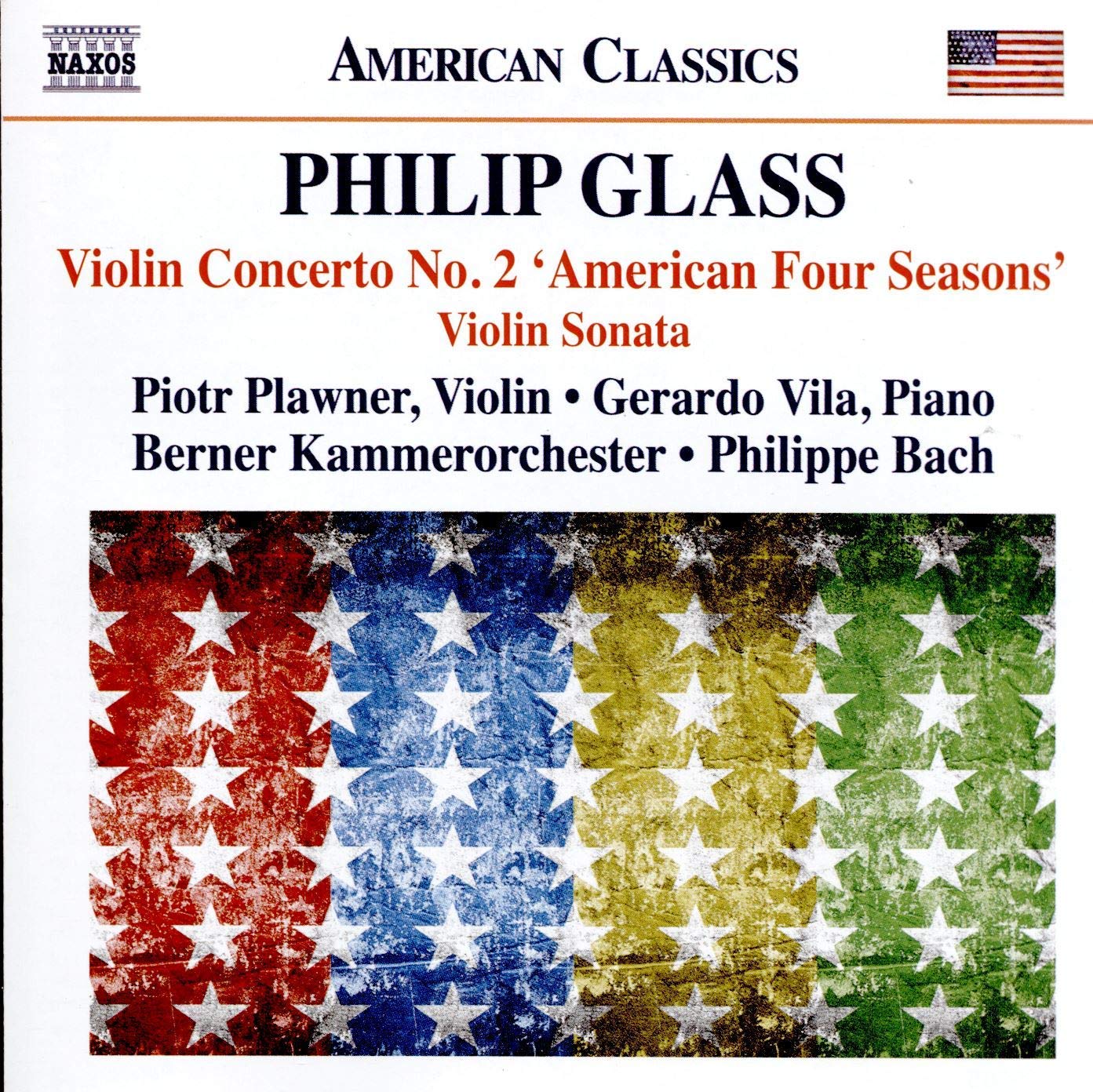GLASS Violin Concerto No 2 (Piotr Plawner)
View record and artist detailsRecord and Artist Details
Genre:
Orchestral
Label: Naxos
Magazine Review Date: 04/2020
Media Format: CD or Download
Media Runtime: 42
Mastering:
DDD
Catalogue Number: 8 559865

Tracks:
| Composition | Artist Credit |
|---|---|
| Violin Concerto No 2, 'The American Four Seasons' |
Philip Glass, Composer
Berne Chamber Orchestra Philippe Bach, Conductor Piotr Plawner, Violin |
| Sonata for Violin and Piano |
Philip Glass, Composer
Gerardo Vila, Piano Piotr Plawner, Violin |
Author: Pwyll ap Siôn
Subtitled American Four Seasons, Glass’s Violin Concerto No 2 deviates from Vivaldi’s well-known work in that each movement avoids portraying a specific season. Glass’s concerto in fact represents the changing conditions and shifting cycles that occur within the seasons rather than inherent differences that exist between them.
Whether the composer was making some general point about seasonal fluctuations as a result of climate change is unclear. What is certain is that there is little let-up for the soloist during the concerto’s eight movements, which contain four unaccompanied movements for violin (a prologue followed by three ‘songs’) alternating with four more or-less conventional movements featuring soloist, string orchestra and keyboard accompaniment.
Previous recordings by Gidon Kremer and Robert McDuffie (for whom the concerto was written) illustrate just how varied interpretative approaches to Glass’s music can be. Kremer’s recording inhabits two very different worlds within a single performance – withdrawn and introverted in the soliloquy-like solo movements while taking on a much warmer and engaging persona when the orchestra joins in. McDuffie’s approach, on the other hand, is more ‘literal’. In general he allows the music to speak for itself, although his performance increases in dramatic intensity.
Piotr Plawner’s performance lies somewhere in between the two, so in many respects one gets the best of both worlds. He adds some rubato in the Prologue but does not ‘point out’ the melody in quite the way that Kremer does. Supported by the Berner Kammerorchester’s unobtrusive accompaniment, Plawner’s fluidity of line in the first movement echoes McDuffie’s. Plawner applies plenty of snap and intensity to the third while impressively combining speed and skill in the fourth. However, in general his rendition is somewhat conservative. What is gained in beauty and clarity of tone is rather lost during those moments that demand a gritter, edgier sound.
Plawner’s approach works to his advantage in the Violin Sonata, where the second movement calls out for an expressive tone and elegant line, and the funky final movement a lighter, more carefree touch. This is a fine performance, as is the concerto, but I’d recommend checking out the Kremer and McDuffie recordings too, for comparison.
Discover the world's largest classical music catalogue with Presto Music.

Gramophone Digital Club
- Digital Edition
- Digital Archive
- Reviews Database
- Full website access
From £8.75 / month
Subscribe
Gramophone Full Club
- Print Edition
- Digital Edition
- Digital Archive
- Reviews Database
- Full website access
From £11.00 / month
Subscribe
If you are a library, university or other organisation that would be interested in an institutional subscription to Gramophone please click here for further information.




